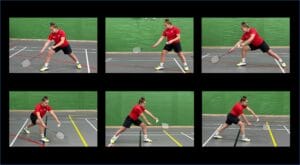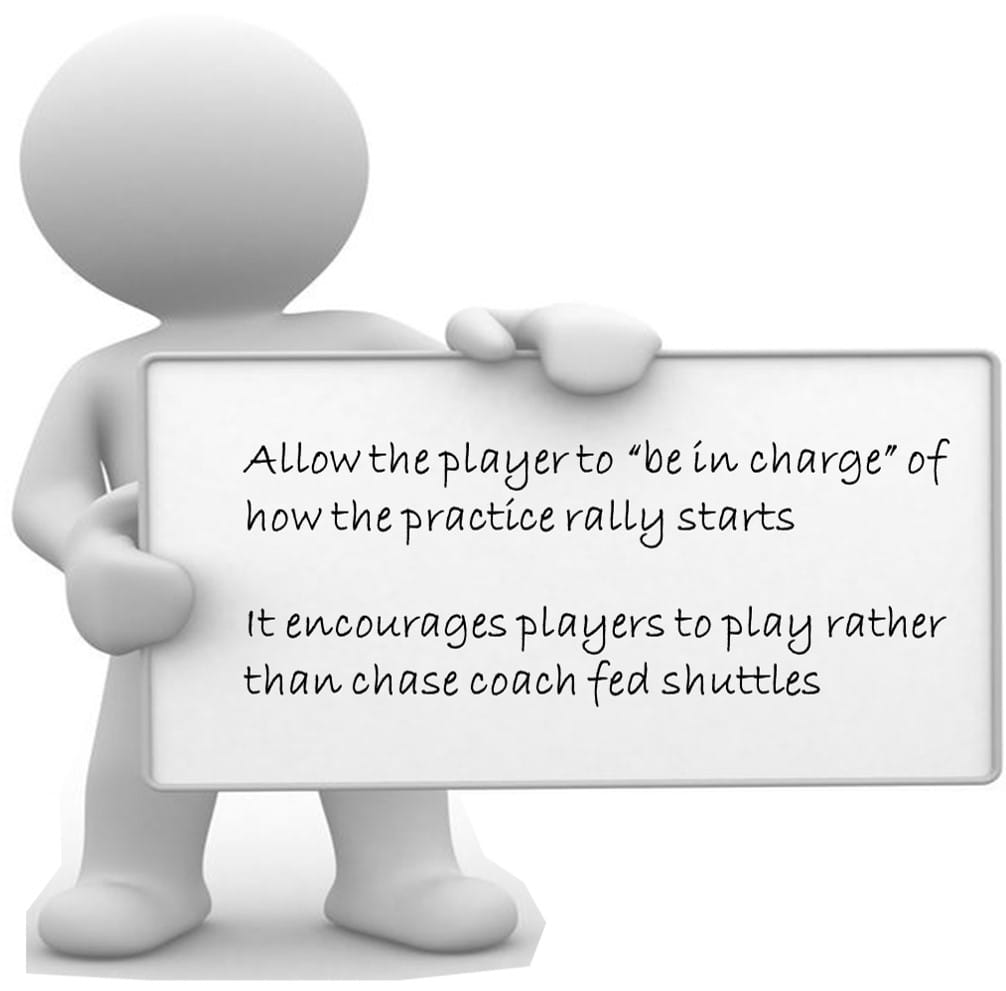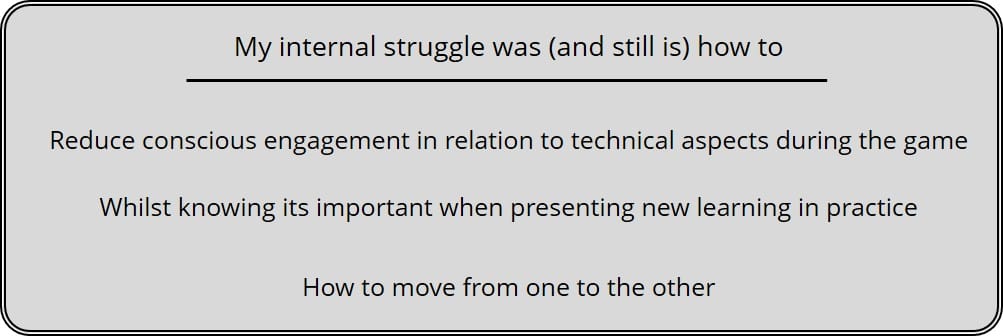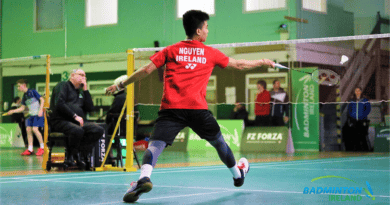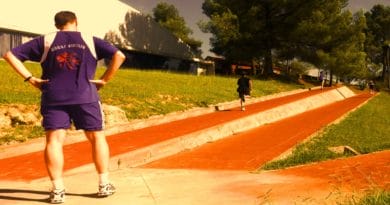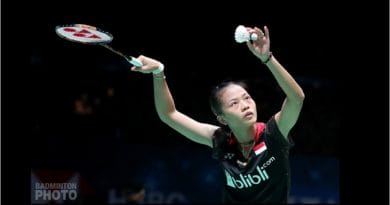The coaches guide to badminton stances Part 3
Can you reference your coach education and show me where I can find out more about stances?
I’m struggling to find anything 🙁
Where is the information about how what and when to introduce them to players?
The action of adopting a stance involves a split-step but is a tactical choice not just a technical movement?
Do you think that your players would benefit from knowing the tactical choices about stances ?
Watch this video and look at all the different stances that both Tai Tzu-Ying & Michelle Li use
Part 3 – I think it’s the most important of all the posts
.. The day I was introduced to badminton stances (click here to read more)
1. Why use them
2. There are 4 of them
3. When are they used (including the Forward vs Backward attacking stance debate)
4. Most are anticipatory
5. Encourage autonomous movements (be wary of overemphasising Technical elements)
6. How to allow for and include in practice
7. Early introduction
8. Practice to forget
– – – – – – – – – – – – – – – – – – – – – – – –
6) How to allow for and include in practice
Here are 3 methods that you can use to introduce and develop the use of Badminton stances in practice. Some of these may be new to you and I encourage you to consider and work through the ideas here.
- Player-start practices
- Wallwork (used for early development) (read no.7 to find out more)
- Include and allow for, in all rally work
- Using shadow movements is at best limited and may have the effectiveness you think
How do you create practices that introduce stances with conscious game-like engagement?
How do you then keep the game-like thoughts and reduce the technical conscious load?
Player-start practices
Coaches should be sensitive to who ‘starts’ the majority of practices, especially with individual 1 to 1 sessions, i.e. only coach and player on the court.
Simply, the player starts the practice rally (whatever it is) by either starting in a racket foot forward or a square stance, and crucially, they are holding the shuttle. They play the 1st stroke.
I am not insisting that players start all practices.
However, in the development of stances and other aspects, I encourage coaches to experiment and give the shuttle to the player at the start of every practice rally. Coaches may feel a loss of control over the practice, as I did when I first tried this.
Having the player start the practice rally (rather than the coach) is a key element and introduction to the process of striking and then using a ‘timed’ movement to adopt the required stance. Without this type of rally start the stimuli to initiate the pretension (split step) and movement into the stance will be reduced.
Then depending on the stroke they play, they continue in that stance or transition to another. It is this transition between stance or just pre-tensioning within the same stance (using a small jump) that gives multiple opportunities that otherwise would be missing.
I had been coaching about 6 years before I was introduced to this concept and it made a noticeable difference in how my players progressed 🙂
I have yet to see it explained in Coach Education programs 🙁 My hope is that one day this simple concept will be known to all.
Have you thought about changing your multishuttle practices for player-start single shuttle rallies?
 Player-start benefits (for stances)
Player-start benefits (for stances)
- Game likeness from the start. The initial stance will be appropriate to the first stoke from the player (the stance and feed will make sense 🙂 )
- Anticipation skills start from before the partner strikes the shuttle after the initial player starting ‘feed’. Hopefully, the player will already be having anticipatory thoughts based on their own feed, partner/coach approach, ability.
- Motivational; the player has initial ‘control’ of the practice (very important) based on the initial ‘feed’ (i.e. direction, length, speed, flight) and the subsequent stance adopted. All these are in the player’s control.
- Block or Open practice; the initial movements involving stances are repeated at the start, subsequent movements are variable and are based on the opponent’s shot choice, plus the players’ initial stance movement.
- Player choices: an increased amount of practice ‘ownership’ and opportunities to experiment based on their own tactical choices i.e. the feed types and initial stance. Coach no longer starts.
Be aware
This concept will require an understanding of game-like practice design from the coach. All work will involve rackets and single shuttle work. Both parties will, to a varying extent, be working.
Therefore attention to physical and mental requirements (load) must be included within the practice parameters. My advice is to work and rest as you would in a real game.
The key is that players have high motivation to affect (control) the start of the rally and that they use stances to anticipate and prepare throughout. Celebrate elements of the rally where the player deliberately tries to affect what happens next.
This type of practice is not a split-step practice, it is far more than that. The split-step movement is part of the greater use of stances. Practices to develop stances will, over time reinforce the split-step less (possibly not at all), but will reinforce the tactical choice made by the player.
On court during rally work
To maximise the use and development of stances, rallies must be played. Shuttles must be returned, hopefully with an intention of trying to win or trying to minimise any opponent advantages.
To be clear, a rally is not a multishuttle exercise.
Using 1v1, 1v2 practice situations will all help promote the use of stances as they provide rallies. In every rally all or some of the players can have choices. Players should then be encouraged to anticipate the choices made by their opponents/feeders and adopt an appropriate stance.
During developmental stages, the movement into and between stances may be miss-timed or inappropriate for the rally situation. Do not worry as this ‘miss timing’ is often caused by the visual stimulus and the player’s inexperience to understand the visual and tactical clues.
Please remember that it is not the aim that the player adopts the ‘correct stance’ for the direction in which they then move. The aim is to adopt a stance that either prepares to move to the shuttle that will hit the court 1st or to prepare to move to the shuttle that will give the player a tactical advantage.
Be aware that the direction the player eventually moves in is based on the stroke played by the opponent. Of course, this could be influenced by the stance taken by the player in anticipation of that stroke.
How the coach translates all the points above into a series of practices over time is a measure of the value of that coach!
Why do we need rallies?
Stances are anticipatory based on what you believe the opponent may play or similarly, something you want to be ready for. Both are tactical choices. However, without the shuttle being returned as in a match, the effectiveness of the stance taken cannot be assessed.
Development of any new learning and especially stances that mix technical and tactical requires testing/development/refining in a game situation.
Note: stances are part technical and part tactical. They have critical technical elements (positioning on the court, leg width, racket positions, etc.) BUT they are also heavily tactical (which to adopt, what to prepare for, when to use or not use)
To try and practice stances in a single shot multi-shuttle practice is at best limiting and at worse only practicing known movements
Single rally practice
This is a simple yet very effective way to allow players to become accustomed to standing in one of the 3 main ‘in-game stances’. If the partner (feeder) is starting the practice rally either by a racket or hand feed, the player adopts a stance in response to the position. They choose the stance depending on the shuttle position over the net on the opponent’s side.
A simple question for developing players could be “is the shuttle likely to be hit upwards or downwards towards me” and “which shot do I want to prepare for?”.
Examples
- F/h block (tight) then ‘jump turn’ into a forward attacking stance. They anticipate and cover the shot that will hit their court first (a straight net)
- F/h block (long and above the net) then preload leg into a square stance. They anticipate a drive flat return as it will give them the least time to react.
- High serve or high life stance: the player would transition into a square stance before the opponents striking the shuttle. They anticipate a fast down shot and cover the most likely reply.
- B/h block then ‘jump turn’ into either a forward or backward attacking stance depending on the stance and subsequent movement/stroke to be practiced. Use both non and racket leg blocks from the initial square. They anticipate and cover the shot that will hit their court first (a straight net = forward attacking stance, lift towards the rear court = backwards attacking stance)
- Forward or backward attacking stances can also be encouraged after low servicing in singles games.
The aim is to adopt a stance that either prepares to move to the shuttle that will hit the court 1st or to prepare to move to the shuttle that will give the player a tactical advantage
Be aware that the direction the player eventually moves in is based on the stroke played by the opponent
– – – – – – – – – – – – – – – – – – – – – – – –
7) Early introduction
Here are 2 methods that you can use to initially introduce the use of Badminton stances to players. I encourage you to find many more ideas but to ensure that they follow the principles that are repeated throughout these 3 posts.
- Shuttle time practices
- Wallwork
It is essential that players are introduced to the forward ‘attacking’ and square ‘defensive’ stance as soon a possible when they start Badminton
Shuttle time
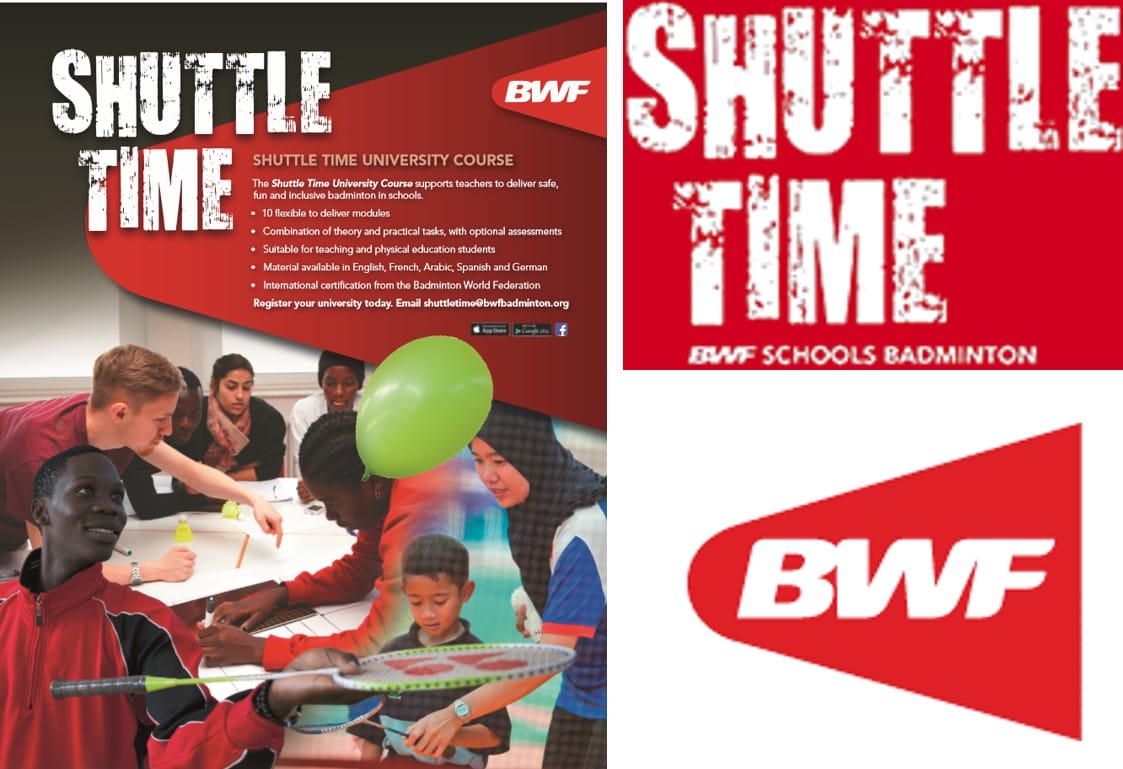 The introduction of stances need not be a complex set of teaching/coaching cues. There are many elements in the BWF Shuttle time program that encourage racket foot positions.
The introduction of stances need not be a complex set of teaching/coaching cues. There are many elements in the BWF Shuttle time program that encourage racket foot positions.
- Shuttle Time Lesson Plans are available to download in 21 languages. Click here to register for free today.
- Bouncing the shuttle with a timed racket foot forwards
- Being ready for the likely reply (included in many elements)
Wallwork
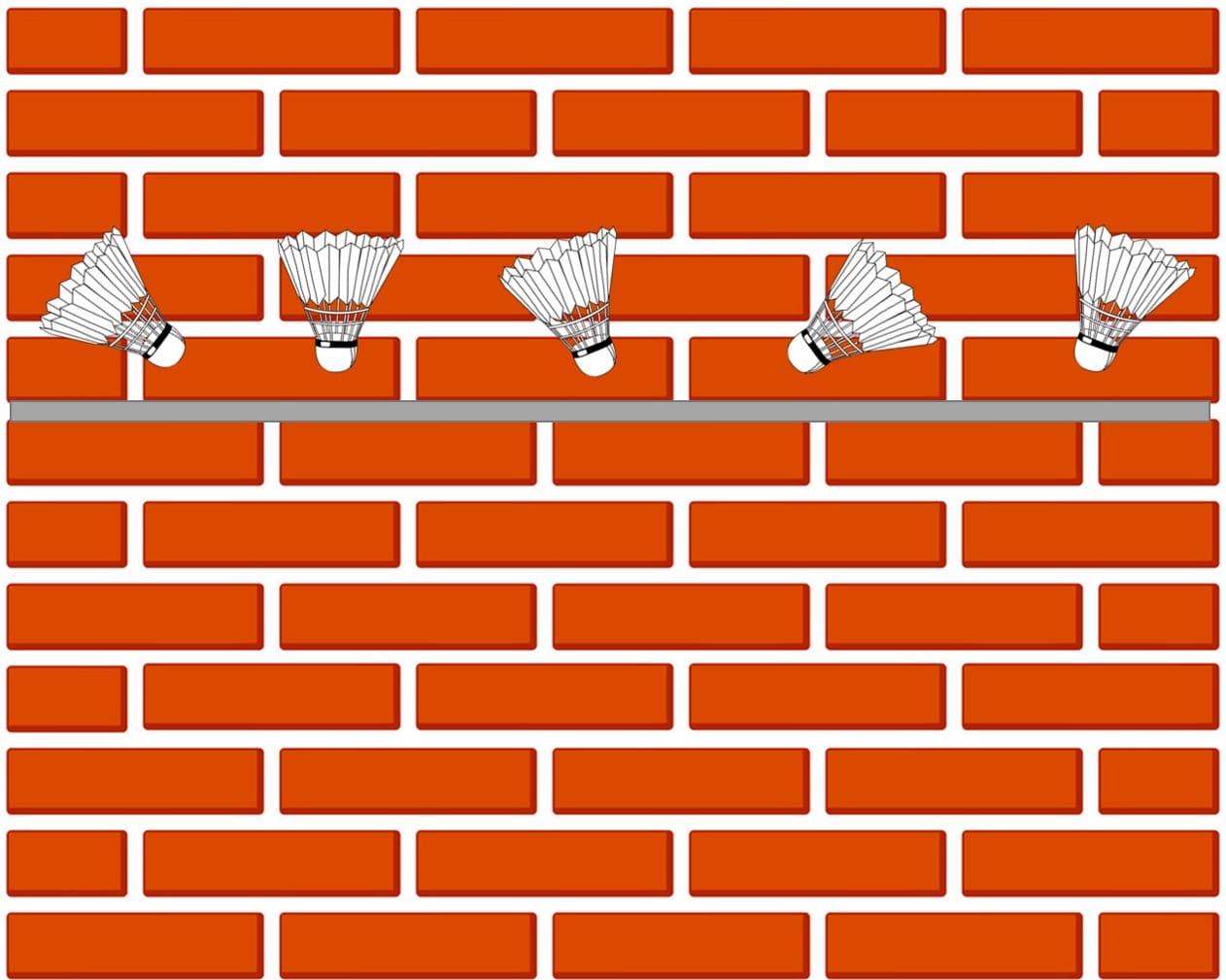 I have found many positives of striking against the wall, especially with young players. Players can become accustomed to starting all 3 stances then striking with a variety of strokes.
I have found many positives of striking against the wall, especially with young players. Players can become accustomed to starting all 3 stances then striking with a variety of strokes.
It’s the movement between these stances initiated by the shuttle striking the wall that will help players and coaches introduce and progress.
There are many developmental progressions from this initial simple practice. Players should be encouraged to start in a variety of stances (square defensive or forward attack stances), then strike in a ‘block’ style or ‘soft flick’ towards the wall. As the shuttle strikes the wall the stance can be changed with timed movements.
Examples
Defensive square stances can represent a block to the net in singles. The player strikes an imaginary block, then ‘jump turns’ into a racket foot forwards stance before moving forward to play a net or flick against the wall for their 2nd shot.
Racket foot forward stances represent times when the shuttle is below the net and the opponent could play to the forecourt. The player strikes an imaginary push to the opponent’s forecourt, then stays in this position but preloads (by flexing or a small jump) their legs. Then moving quickly forwards to play their 2nd stroke.
In both these situations, the strokes played against the wall can be straight or crosscourt, hard or soft, loopy, or directly into the wall. All these variations will require a slightly different timing of changing stance and the loading through the legs.
The key is adopting an initial stance, then changing into another just as the shuttle hits the wall
Wallwork benefits (for stances)
- The timing of the movements is, in part, more predictable than with a real opponent.
- Creates opportunities for imaginary play; is the wall a tough player, possibly a world champion? ????
- Variability (although not always game-like)
- Practice success is through simple progressive tasks leading to improved self-confidence and enjoyment
- Working without a partner allowing self-correction, self-organisation (coaching)
- Repetitious work in a small space
- Coach observations from various angles and away from the player
- Very quickly the technical elements can be performed without or reduced conscious engagement
I believe that all novice players should be introduced to Wallwork practices
It’s certainly a ‘go to tool’ in my opinion
– – – – – – – – – – – – – – – – – – – – – – – –
8) Practice to forget
This is the hardest part for me to write and I struggled to know exactly what to say here
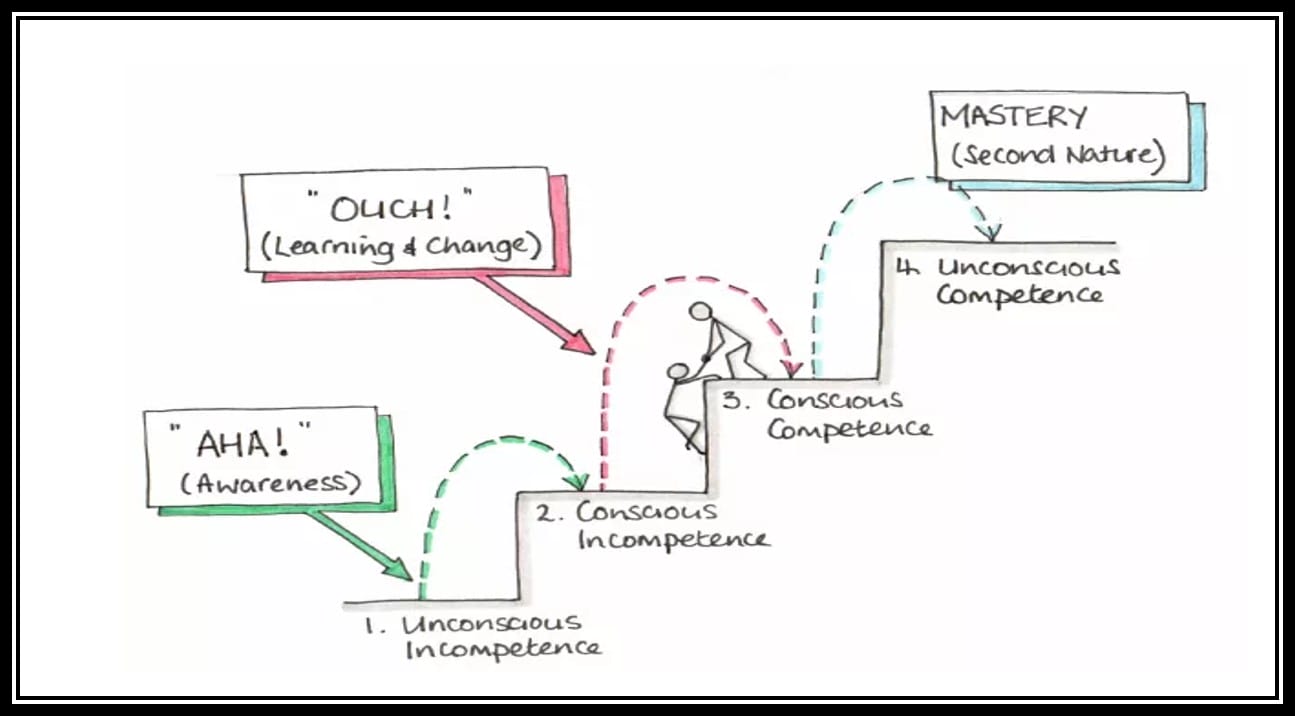
The advice I will give may seem contradictory:
help them forget (the technical) but also make a decision on which stance to adopt (the tactical)
I believe that coaches need to move carefully and skilfully from the initial coach introduction of all technical elements towards a more tactically based player decision-based approach.
My fear is that coaches will keep reinforcing the technical elements of stances rather than allowing the player to make tactical choices based on their previous learning. Coaches should praise the tactical choice for developing players (even if initially incorrect) rather than reinforcing any technical points.
Stances are anticipatory, based on what the player believes the opponent may play or similarly something that they want to be ready for
What do you believe?
If you have read parts 1 and 2 plus all the other posts I hope that you now agree that there are benefits to adopting stances. Also, the choice of stance is anticipatory (i.e. before the opponent strikes the shuttle) and is based on a tactical thought.
Be wary of overemphasising Technical elements (see Part2 point 5)
The tactical underpinning is most important, not the technical aspects of the movements
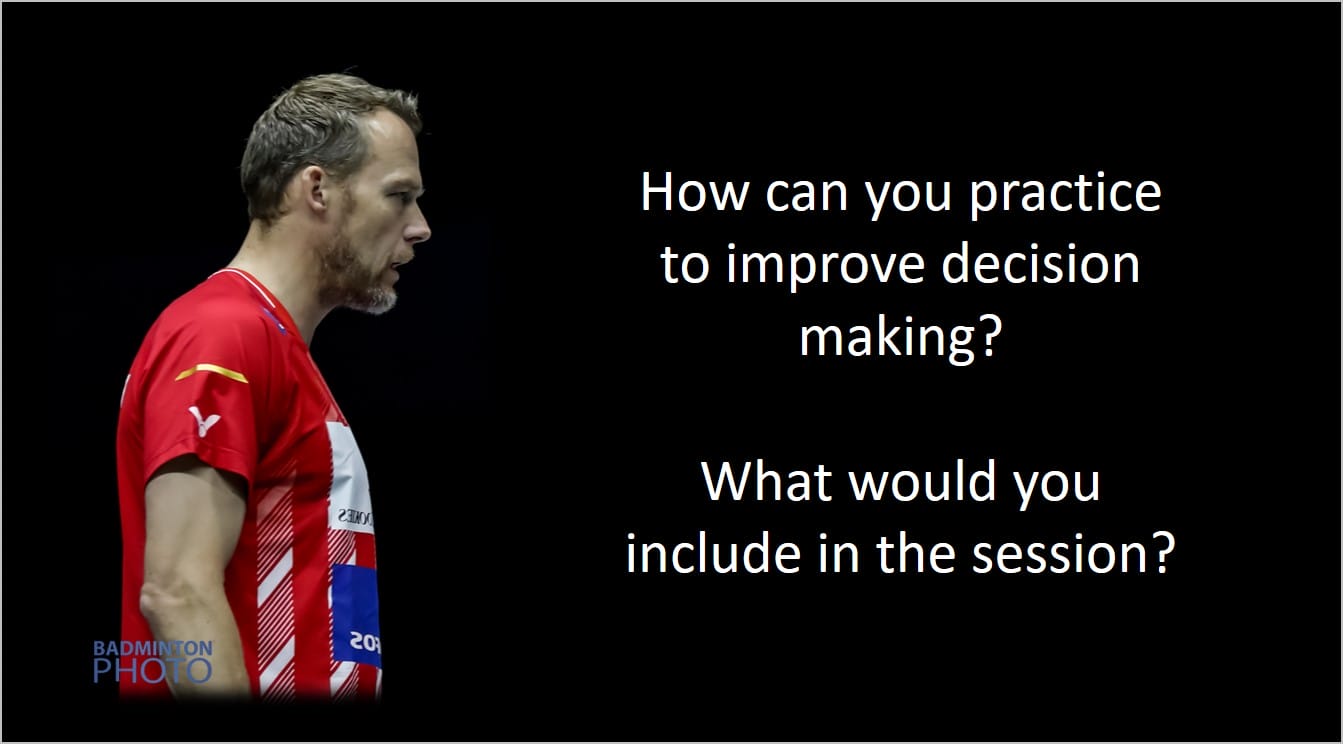 It is important that the thoughts players have regarding these stances do not cause slow movements and reactions. Therefore the role and task of the coach is how to develop stances from an early age such that they are based on tactical choices and the players ‘forget’ the technical underpinning elements.
It is important that the thoughts players have regarding these stances do not cause slow movements and reactions. Therefore the role and task of the coach is how to develop stances from an early age such that they are based on tactical choices and the players ‘forget’ the technical underpinning elements.
Stances are anticipatory and based on what the player believes the opponent may play or something that they want to be ready for. Therefore coaches should, over time, reduce the verbal ‘instructional’ prompts but, crucially, still ensure that game-like visual cues are plentiful.
I recommend that coaches fill their practices with rally-type work that is full of decision-making opportunities. This can be created in many ways, if you need some ideas read this post.
All your practices must contain lots, be ‘rich in opportunities for players to anticipate and select different stances.
However, it is important that in the early introduction to how to, the technical elements will need to be shown. These coach instructional ‘elements of technique’ should only be apparent as long as they are required. Even during this stage, the coach should be striving to change the balance between what is currently aware towards increasing the amount of automated unaware (but still ‘acceptable’) elements.
Coaches
The benefits of not reinforcing the Technical elements of stances should not be underestimated
However, the Tactical choices and opportunities (set by you) to try these should never be reduced
– – – – – – – – – – – – – – – – – – – – – – – –
If you think that I’ve missed any important points it would be great to hear from you
I appreciate all your comments and suggestions, why not send me an email
contact@badmintonandy.com
– – – – – – – – – – – – – – – – – – – – – – – –
If you want to read more follow the links below
6 Ways to use stances in your badminton movement: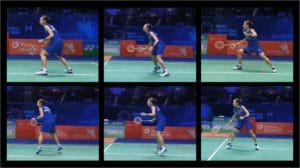
This post is aimed at players. It will take about 6 mins to read and covers some fundamental points about badminton stances, especially in singles movements.
What they are, why you should use them, when they happen, and how you can practice them. Plus why it’s all about the tactical choice you make before your opponent strikes the shuttle.
After you have watched the video, why not take the short quiz. Hopefully, it will help you understand more.
It’s your chance to see the facts in one rally and what actually happens in a real match between world class players.
 What to include in practice: This a list of things to do and not do in practice.
What to include in practice: This a list of things to do and not do in practice.
I hope it will act as a summary. You may not agree with all the points. The aim is to help you introduce stances, allow for in practice, and then how to encourage autonomous movements.
It’s a bullet list so will take only 3 minutes to read, however, it may offer up hours of ideas for future sessions.
Who should start a badminton practice?
How often do you ask the player to start the practice?
Why is it always the coach who hits the first feed?
Try this now! ????



